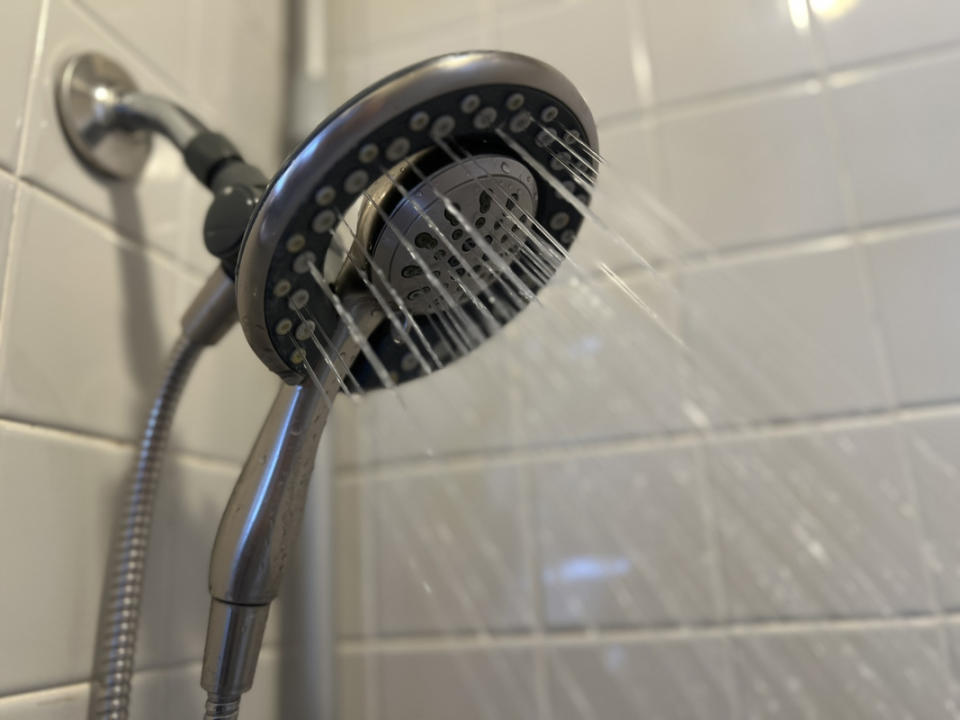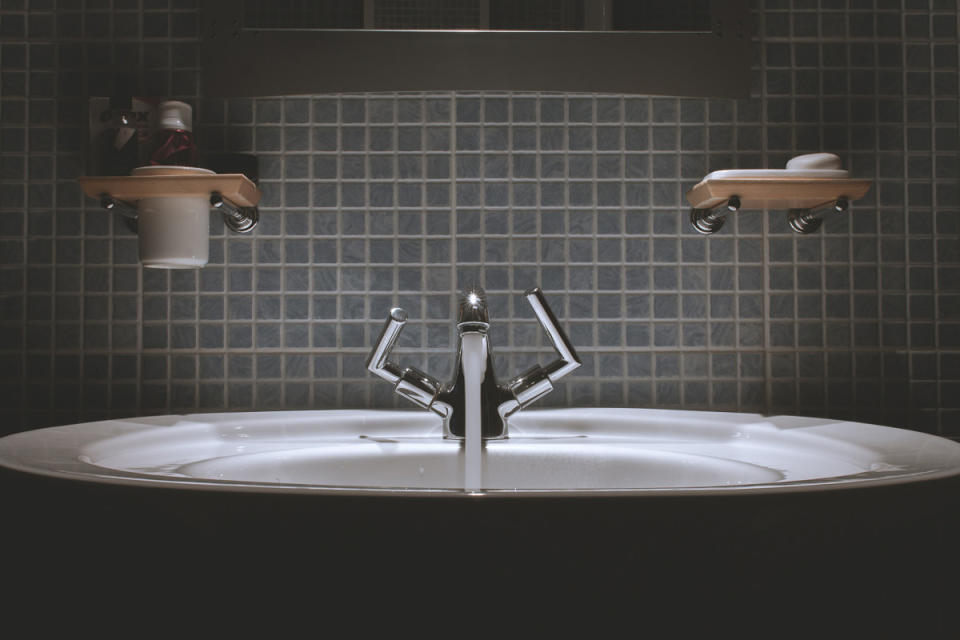How to Clean Your Bathroom Plumbing — Including Biofilm and Rust Stains
We admit it — It's easy to neglect deep cleaning your bathroom. But we all know better, and understand, that vital maintenance tasks like cleaning your showerhead, removing rust stains, and addressing biofilm buildup are important chores. While distractions are understandable, ignoring these tasks can significantly impact your plumbing system's functionality. Regular maintenance prevents clogs, improves water flow, and extends the lifespan of fixtures. Moreover, it can save you money on potential repairs down the line.
Your plumbing system should always be on your spring-cleaning checklist, as grime and clogs can add up quickly in toilets and sinks. To get us back on track, Joseph Wade, VP of Operations of Benjamin Franklin Plumbing shares some important steps you can take to ensure your plumbing remains high quality.

Emily Fazio
Clean Your ShowerheadA dirty shower head prevents your shower from operating efficiently and exposes you to bacteria. If you're only focused on cleaning your shower doors, shower floor, or replacing the plastic shower curtain when it gets slimy, here's where you should redirect your attention:
- Get your hands dirty. Remove the showerhead, and then use an extra toothbrush to scrub in between the small holes.
- Soak the showerhead. Soak it in a tub of white vinegar. After a few hours of soaking, the acidity of the vinegar makes it easier to scrub away calcium deposits and debris.
- Clean the filter. First, check the manual for your showerhead to see how to properly remove the fixture's filter. This will be connected to the pipe. Cleaning the filter is a great way to improve the flow of clean water and the efficiency of your fixture so it lasts longer.
Related: How to Clean Grout Stains in Your Shower

Photo by Jan Antonin Kolar on Unsplash
Deep Clean Your ToiletYou can effectively clean your toilet using household cleaning products you already have on hand!
- Let it soak. First, pour vinegar into your toilet bowl and let it sit overnight. as the acidity breaks down deposits and debris.
- Scrub away. In the morning, use a toilet brush to scrub around the bowl. An extra toothbrush and a little baking soda can help you get to the hard-to-reach nooks and crannies.
- Clean the toilet handle. The flushing handle is often ignored, which is a major oversight, considering it's the one thing being constantly being touched after use. Be sure to give it a good cleaning with an all-purpose disinfectant spray bottle. Remember: there's a difference between disinfecting and cleaning, and using a disinfectant wipe between deep cleanings goes a long way.
- Clean around the toilet seat. Better yet, remove the toilet seat for a deeper clean. It's easier to pay extra attention to the entire area once the seat and lid are removed.
- Nix the carpeting. Lastly, throw out old carpets that wrap around the toilet. They can be a nice decorative touch, but be aware that all bath mats can harbor many germs. Clean the bathroom floors around the toilet with an all-purpose cleaner, while you're at it.
If you’ve been ignoring your slow-draining bathroom sink or shower drain, don’t push it off any longer.
- Feeling lucky? If you’re lucky, you can resolve the problem simply by using a plunger.
- Or need to hire it out? For a tougher clog, however, you might need to hire a plumbing expert to take over to get the job safely and correctly.
Related: 10 Steps to Prepare Your Bathroom Plumbing for Holiday Guests

Photo by Dan Watson on Unsplash
Fight BiofilmBiofilm is different than soap scum. You may have noticed some sticky goo substance on your plumbing fixtures, especially if it’s been a while since you’ve cleaned your sinks and showers. Or maybe you’ve seen ooze that comes up when you clear a hairball from your shower drain. This ooze is biofilm.
Not to worry, the fix is a simple addition to your spring cleaning checklist:
- Clean surfaces by hand. Use a damp cloth and your favorite cleaning solution to wipe it away. When cleaning fixtures, always use soft microfiber cloths and sponges — nothing abrasive.
- Use a drain cleaner for biofilm that forms out of sight. To fight buildup in plumbing lines, you can get in the habit of pouring a small dose of drain cleaner into your sink and shower drain every month to cleanse the pipes.
"By this point, you may have realized that your water has a high iron content," notes Wade. "This effect can leave brown stains around your sinks, tubs, and toilets. It can be subtle to detect, as this can happen even if the water tastes normal and appears to be clear."
Remove Stubborn Rust StainsGo ahead, check now. If your toilet bowl has a brownish ring around the water line, it may be rusty. This can take some serious effort to clean, but the ingredients are simple: A chemical bathroom cleaner that contains hydrochloric acid is our go-to solution (wear rubber gloves, cover all your skin, and wear eye protection to ward against splashes as your pour it into the bowl). As a more eco-friendly toilet bowl cleaner, Wade recommends lemon juice mixed with salt. For lemon and salt to be most effective, you'll have to turn off the water to the toilet tank and drain the bowl so the lemon juice isn't immediately diluted by water.

